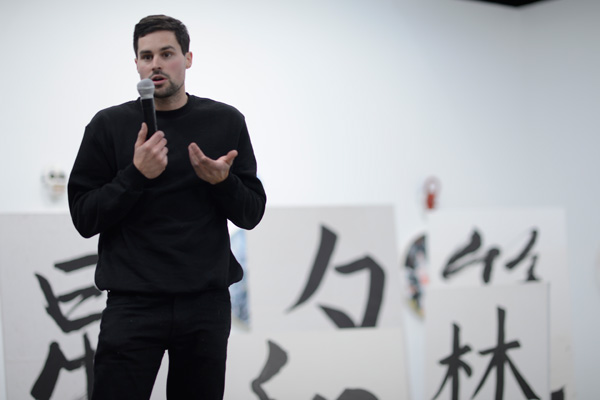 |
|
French artist Timothee Dufresne talks on how he created his artwork of Chinese characters in a recent exhibition in Beijing. [Photo provided to China Daily] |
He sees the characters as human body in motion. For example, an ancient character he photographed at a Chinese museum appeared to him like "a person walking".
Christine Cayol, founder of Yishu 8, says the young artist has provided "poetic perspective" to his work by trying to establish a connection between Chinese characters and the human body.
At the opening ceremony of his exhibition on Dec 9, Dufresne invited the audience to take part in a game of words by also dancing among the installations wearing masks he made for the show.
"I want to tell the stories of these characters," Dufresne says.
Each character has different parts. Separating or combining these parts create new things. He put the character of lin (forest) on the top of xi (dusk) and it became meng (dream).
"In this case, meng means night in a forest. That's an ideal place and time to make dreams," he says, laughing.
Some of Dufresne's previous works are also about word games, such as French and English letters. Occasionally he uses his own body as part of the works.
Before coming to Beijing, Dufrense knew little about Chinese culture or calligraphy, nor about the language. But his interest has grown during his stay in the capital. His passion for Mandarin and Chinese characters drove him to quickly master the language the best he could.
Zhang Qi, an employee at Yishu 8, says the artist loves to talk to local people. Sometimes he would talk to people for hours.
"People here are so nice. I hope I can come back soon," says Dufresne, who enjoys talking to elderly people in parks and with the younger generations on WeChat, a popular Chinese social networking app.
His art residency ends in December.
If you go
10:30 am-6:30 pm, through Jan 10. Yishu 8, 20 Donghuangchenggen Beijie street, Dongcheng district, Beijing. 010-6581-9078.